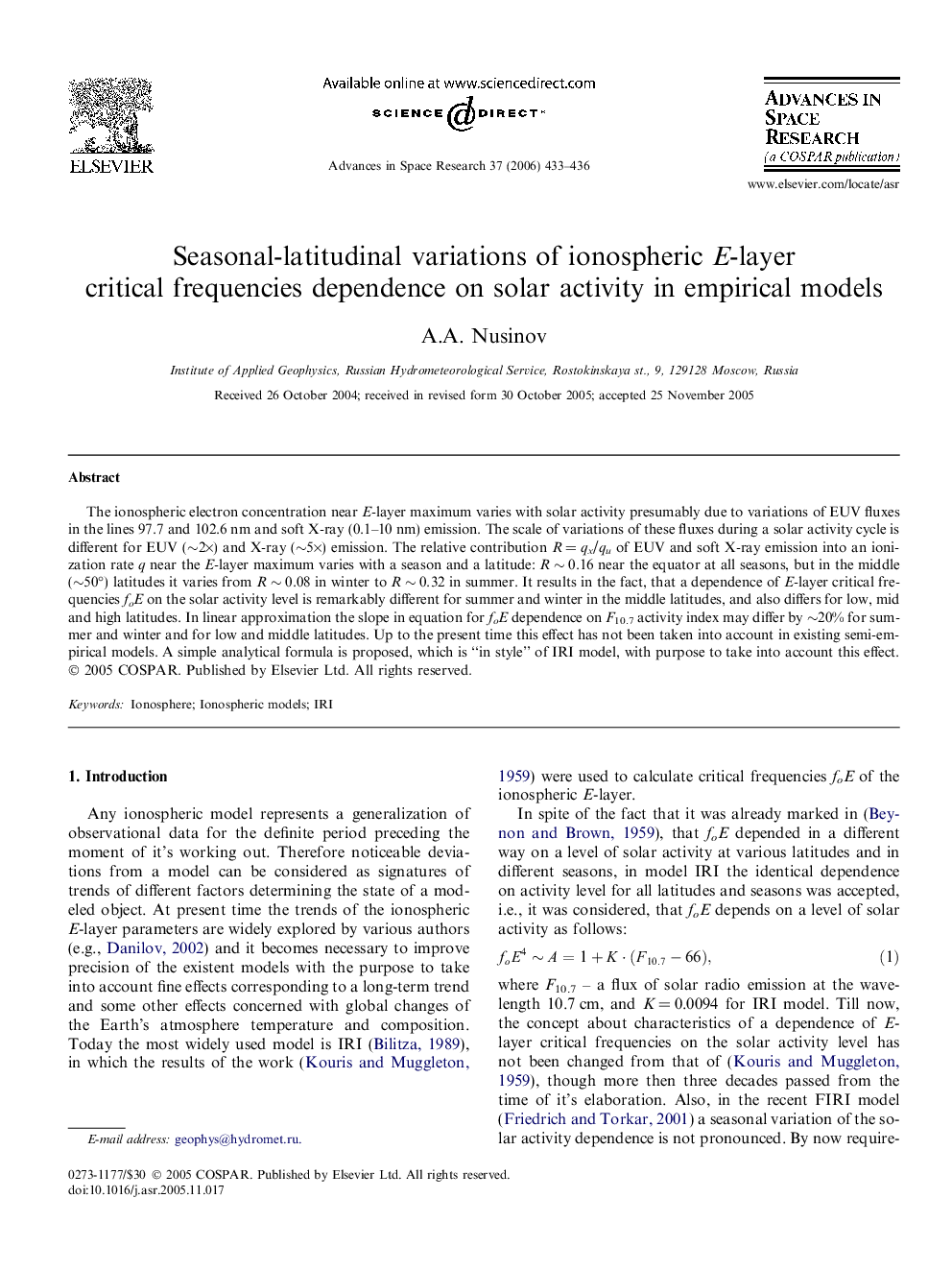| Article ID | Journal | Published Year | Pages | File Type |
|---|---|---|---|---|
| 1767431 | Advances in Space Research | 2006 | 4 Pages |
Abstract
The ionospheric electron concentration near E-layer maximum varies with solar activity presumably due to variations of EUV fluxes in the lines 97.7 and 102.6 nm and soft X-ray (0.1-10 nm) emission. The scale of variations of these fluxes during a solar activity cycle is different for EUV (â¼2Ã) and X-ray (â¼5Ã) emission. The relative contribution R = qx/qu of EUV and soft X-ray emission into an ionization rate q near the E-layer maximum varies with a season and a latitude: R â¼Â 0.16 near the equator at all seasons, but in the middle (â¼50°) latitudes it varies from R â¼Â 0.08 in winter to R â¼Â 0.32 in summer. It results in the fact, that a dependence of E-layer critical frequencies foE on the solar activity level is remarkably different for summer and winter in the middle latitudes, and also differs for low, mid and high latitudes. In linear approximation the slope in equation for foE dependence on F10.7 activity index may differ by â¼20% for summer and winter and for low and middle latitudes. Up to the present time this effect has not been taken into account in existing semi-empirical models. A simple analytical formula is proposed, which is “in style” of IRI model, with purpose to take into account this effect.
Keywords
Related Topics
Physical Sciences and Engineering
Earth and Planetary Sciences
Space and Planetary Science
Authors
A.A. Nusinov,
